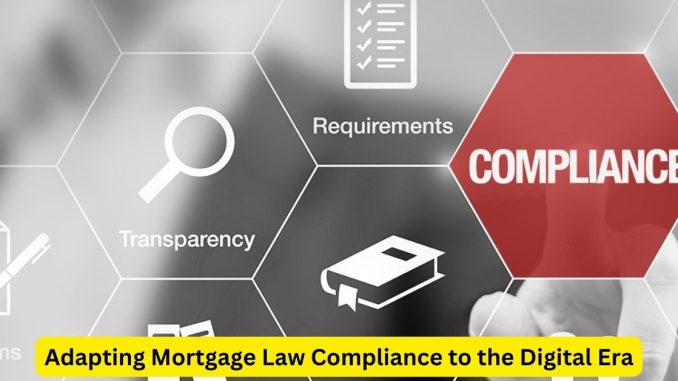
The digital age has revolutionized the mortgage industry, bringing forth innovations that streamline processes and enhance accessibility. However, this evolution also presents unique challenges in ensuring compliance with mortgage laws within this rapidly changing digital landscape.
One of the key aspects of mortgage law compliance in the digital age involves data security and privacy. With the migration of mortgage transactions to digital platforms, sensitive borrower information is transmitted and stored electronically. Compliance with regulations like the Gramm-Leach-Bliley Act (GLBA) and the Fair Credit Reporting Act (FCRA) requires robust cybersecurity measures to safeguard personal data from breaches and unauthorized access.
Additionally, electronic disclosures and signatures have become prevalent in mortgage transactions. Compliance with regulations like the Electronic Signatures in Global and National Commerce Act (ESIGN) and the Uniform Electronic Transactions Act (UETA) is essential for ensuring the legality and enforceability of electronically signed documents. Mortgage industry stakeholders must implement secure and compliant electronic signature solutions while maintaining adherence to disclosure requirements.
Amidst the digital transformation, maintaining transparency remains a critical facet of compliance. Borrowers should have access to clear and comprehensive information regarding mortgage terms, rates, fees, and other pertinent details. Compliance efforts need to focus on adapting disclosures and educational materials to digital platforms, ensuring borrowers can easily access and understand the information provided.
Regulatory alignment with technological advancements is another pivotal aspect. Government agencies and regulatory bodies must continuously update and adapt regulations to accommodate technological changes in the mortgage industry. This includes guidance on the use of artificial intelligence (AI) and machine learning in mortgage underwriting processes while ensuring compliance with fair lending laws to prevent discrimination.
Moreover, the verification of digital identities in remote transactions poses a compliance challenge. Establishing the identity of borrowers and stakeholders in digital mortgage processes requires secure and reliable identity verification methods compliant with anti-money laundering (AML) and know-your-customer (KYC) regulations.
Collaboration and education are crucial for ensuring compliance in the digital age. Industry stakeholders, including lenders, technology providers, regulators, and legal experts, must collaborate to develop best practices and standards that balance innovation with regulatory requirements. Continuous education and training programs are essential to keep professionals abreast of evolving compliance obligations and technological advancements.
In conclusion, the digital era offers immense opportunities for efficiency and accessibility in the mortgage industry. However, ensuring compliance with mortgage laws in this landscape demands proactive measures to address data security, electronic signatures, transparency, regulatory alignment, identity verification, and ongoing education. Striking a balance between technological innovation and legal compliance is crucial to harness the benefits of the digital age while upholding the integrity of mortgage transactions.
Leave a Reply